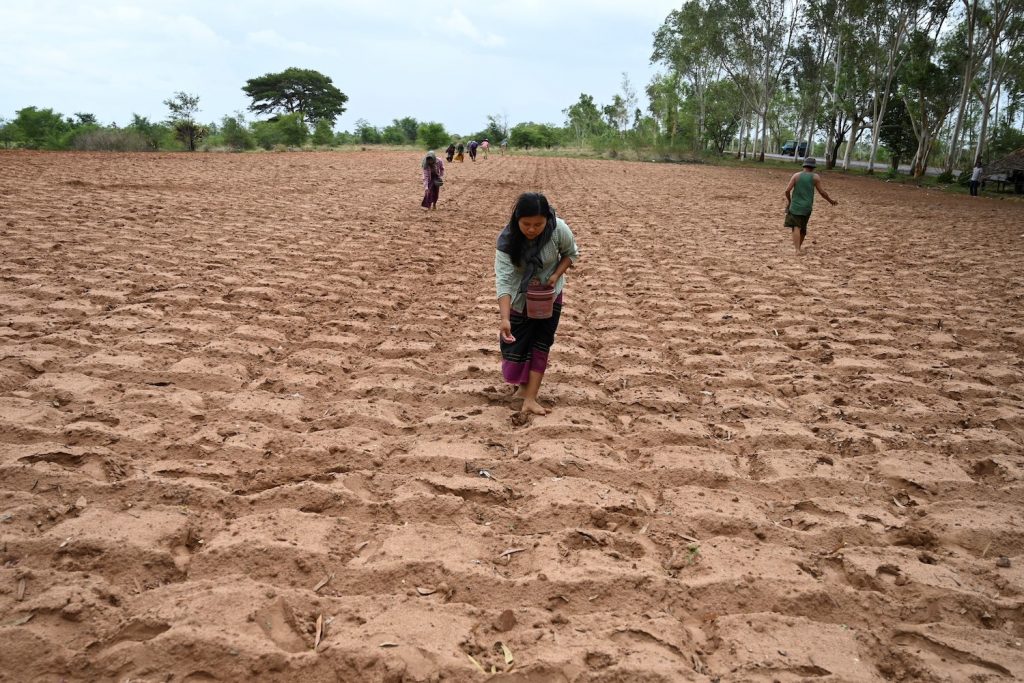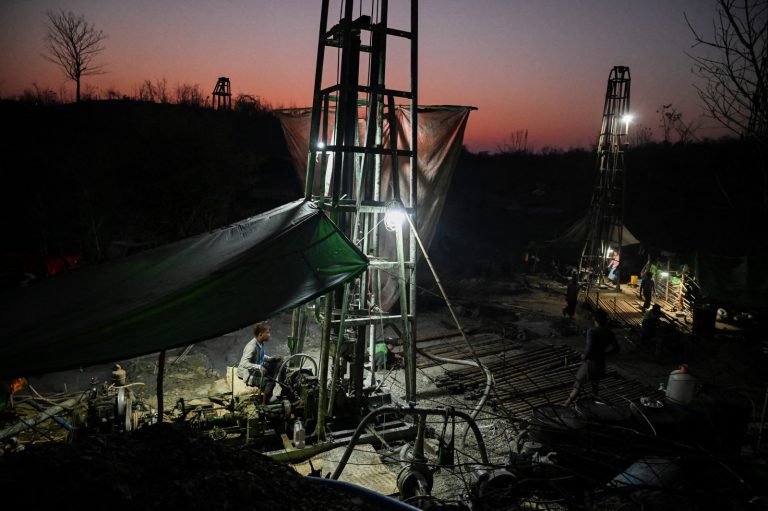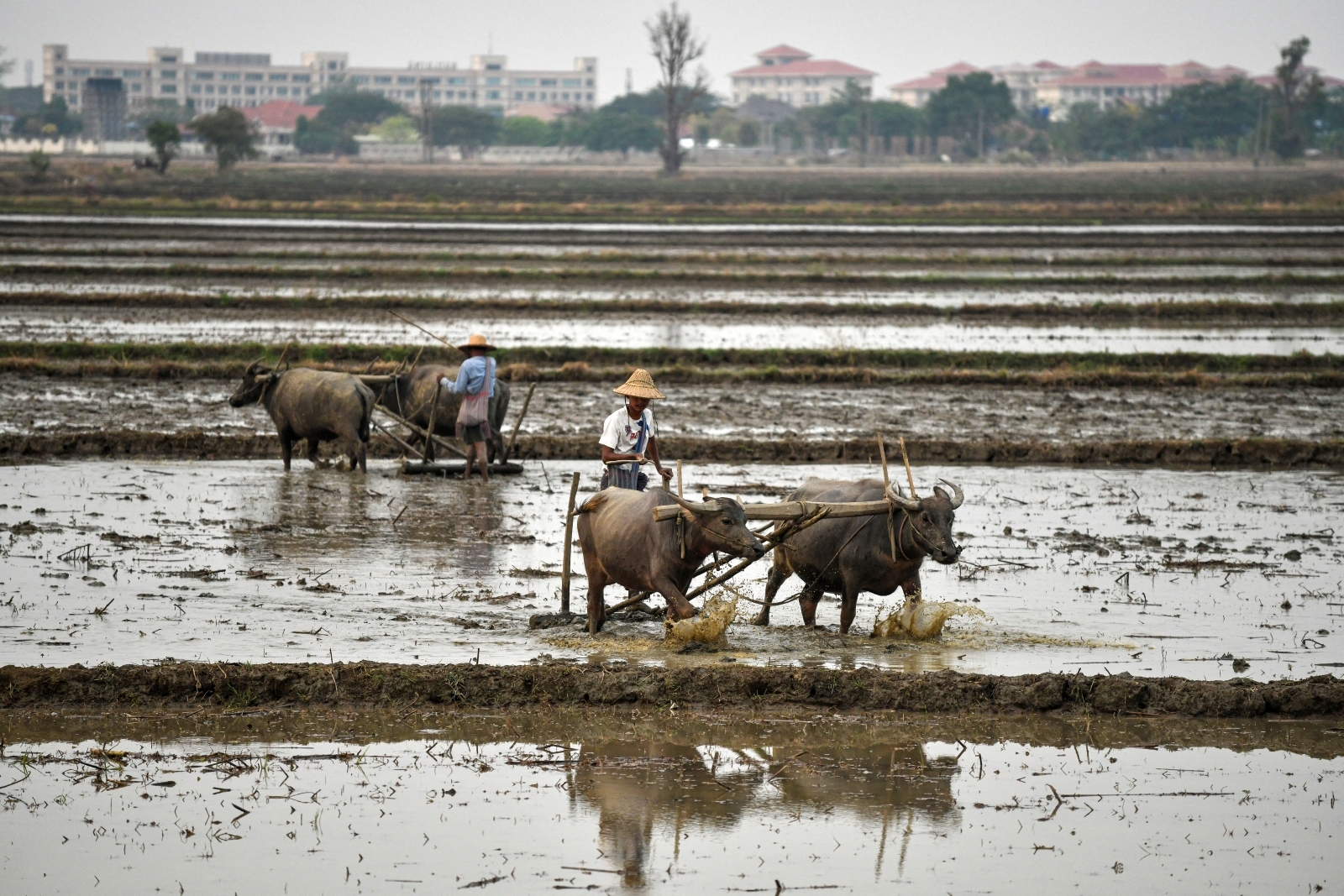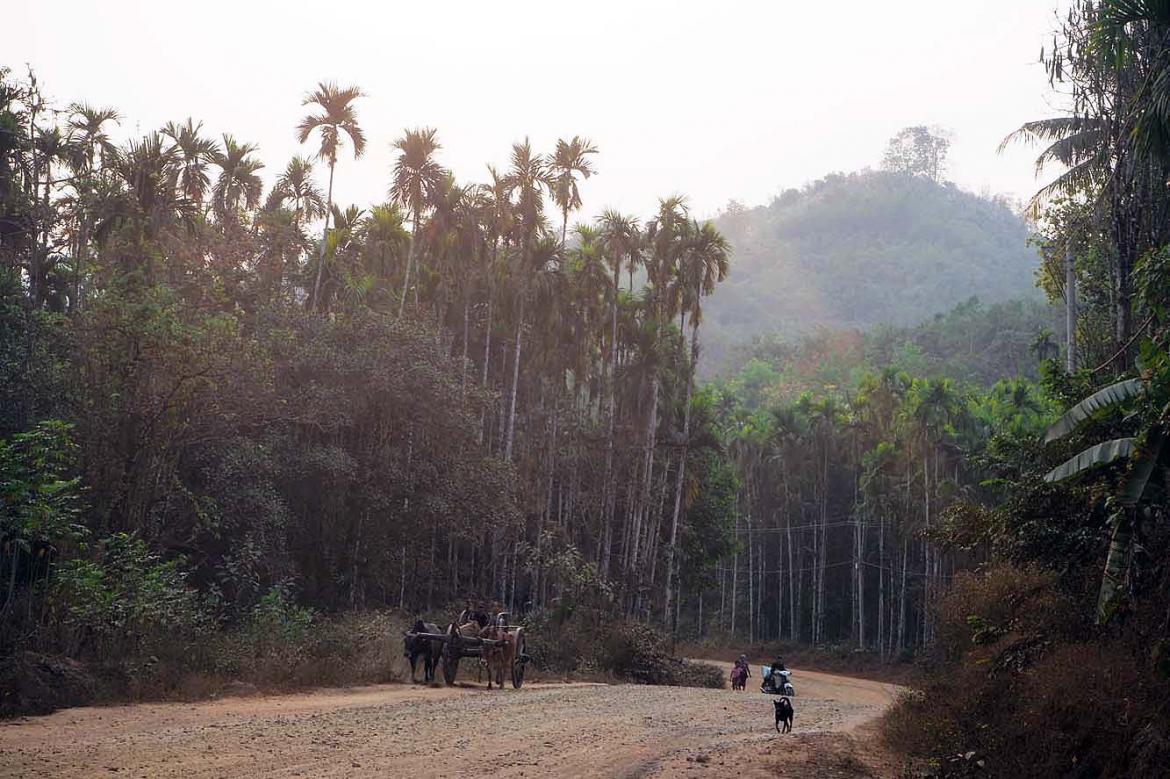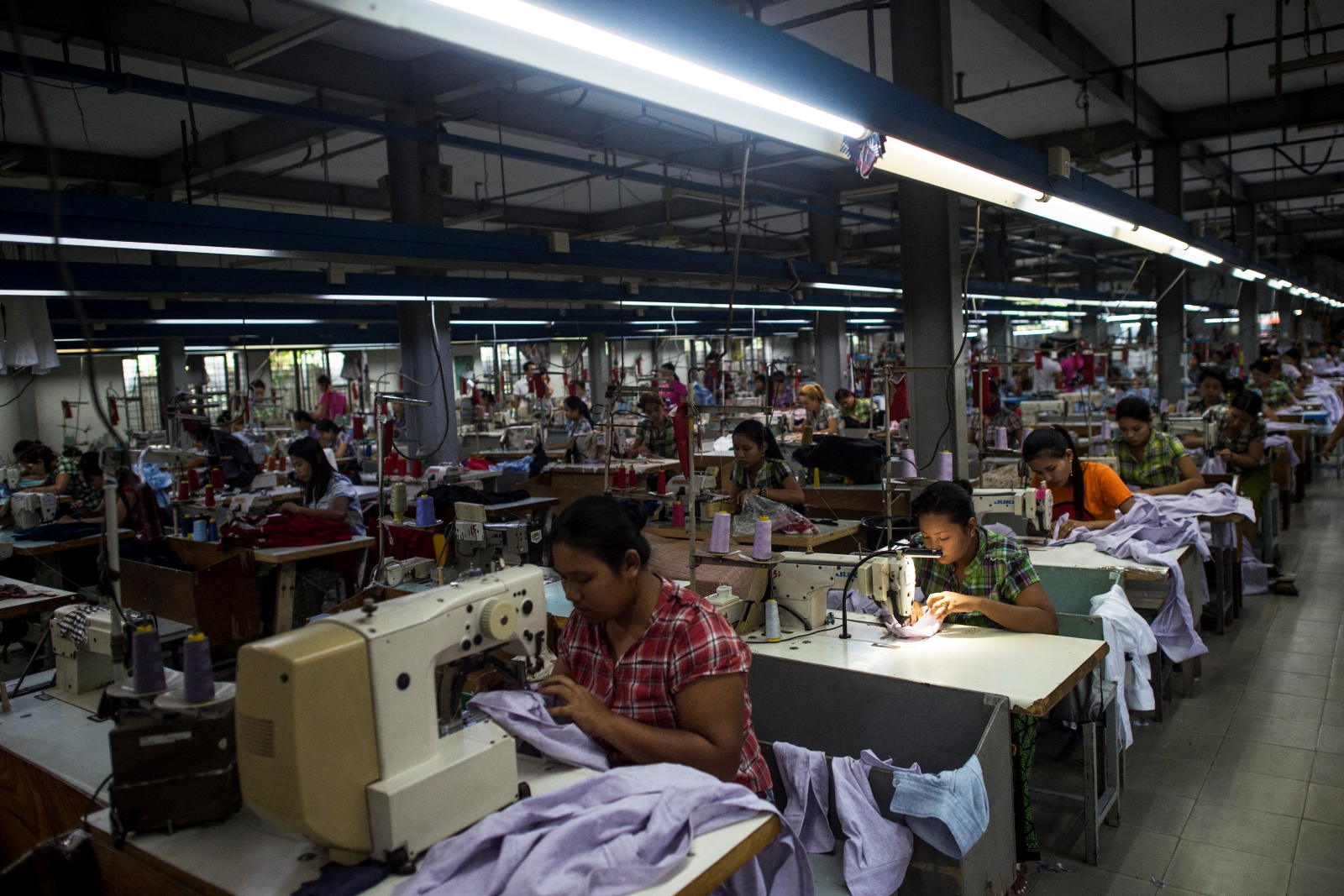Desperate for cash and low on work, rural households are turning to high-interest loans from informal moneylenders as microfinance companies are forced to cut back on credit.
By YE MON | FRONTIER
On May 11, a storm swept through a village in Magway Region and battered the house of Ko Win Kyaw Soe. The need for repairs was urgent, he said, but without the money to cover costs or the time to jump through the hoops of a microfinance loan application, he reluctantly turned to an illegal moneylender.
The decision has beckoned another storm – one of high interest rates and spiralling debt, and the possibility of threats and violence. But the economic turmoil brought by COVID-19 restrictions has left desperate borrowers like Win Kyaw Soe with little choice.
For Win Kyaw Soe, the monthly interest of 20 percent on the K100,000 sum to fix his home in Tat Kone village in Magway Township would have been steep at the best of times. But measures to prevent the spread of the coronavirus had recently forced the temporary closure of the beer station where he was a waiter in Magway town, and for the time being he has no income.
“I’m not sure I can pay back the capital, much less the interest,” Win Kyaw Oo told Frontier. “But I will do my best to pay the interest, at least.”
If he is unable to clear the loan within 30 days, he will have the choice of paying K20,000 to cover the interest or having it added to his loan. If he makes no repayments for 10 months, he will owe the principal plus K200,000 in interest.
The moneylenders who provide quick cash to people like Win Kyaw Oo in desperate situations are often portrayed as predatory, seeking to trap their clients in an ever-spiralling burden of debt.
But Win Kyaw Oo’s lender, who spoke to Frontier on the condition of anonymity, said this was exactly what she didn’t want. Yes, her interest rates are high, but this reflects the risk that she will not be paid back. And without such loans, people in need would have few other ways to access cash quickly, she added.
“We lend money even though we cannot be sure the loan will be repaid; if people think our interest rate is higher than other lenders, they should not borrow from us,” said the moneylender, who lives in Magway town.
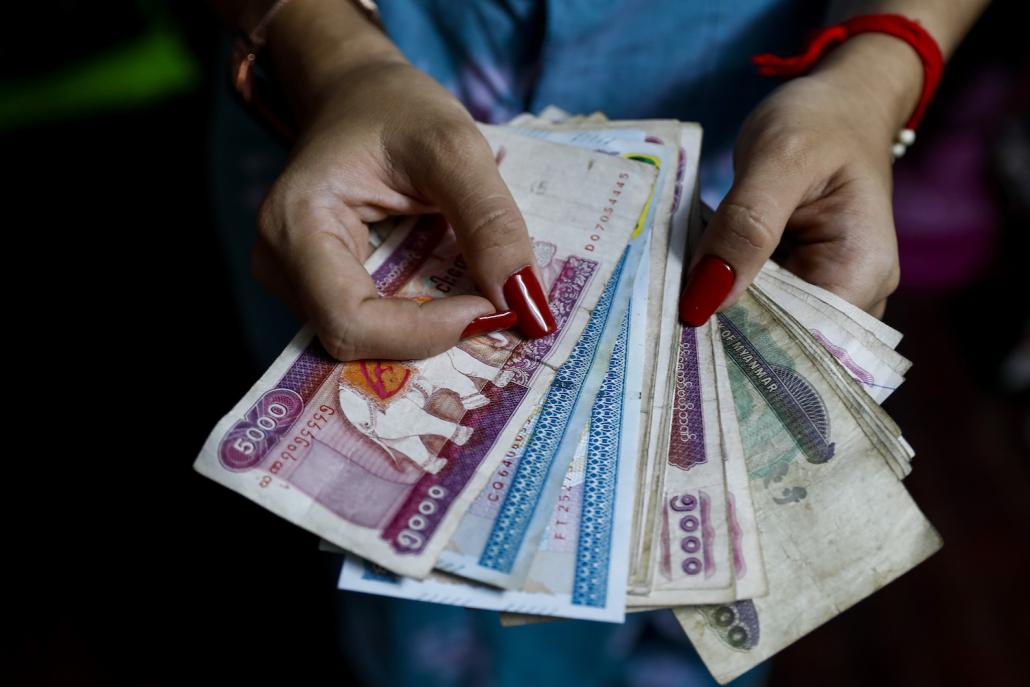
Despite growing use of formal financial services like banks, microfinance lenders and mobile money platforms, informal Iending is still widely used in Myanmar. (Nyein Su Wai Kyaw Soe | Frontier)
COVID-19 and the need for cash
Win Kyaw Oo is far from the only person to find himself in need of a fast loan to tide himself over.
The economic impact of COVID-19 has already affected millions – probably tens of millions – of people in Myanmar, prompting fears that many are taking on high-interest debt from moneylenders that they will later struggle to repay.
Although Myanmar is expected to be one of the few countries in the region to record positive GDP growth this year, the outlook remains grim, at least for the short term.
A recent survey of 750 businesses by The Asia Foundation laid bare the impact, with 29pc completely closing and 74pc having seen sales drop to less than half of normal levels. Businesses had laid off an average of 16pc of their employees, and half of those surveyed said their business was at moderate or high risk of shutting down.
The most affected are likely to be those with the fewest resources to cope – the poor who were already struggling before COVID-19.
Although poverty in Myanmar has been steadily declining for decades, millions of people remain just one calamity – accident, illness or unemployment – away from falling back into extreme hardship.
The 2017 Myanmar Living Conditions Survey found that while the poverty rate had halved since 2005 to 24.2pc, one-third of the population was highly vulnerable to falling into poverty in the future, and the share of those classified as vulnerable had actually increased.
Rural areas are likely to be particularly hard hit. Poverty is almost three times more prevalent in rural compared to urban areas, and the number of poor people is 6.7 times higher, the living conditions survey found.
Many rural households rely on remittances from relatives migrating to work inside Myanmar and abroad. Although the effects are not totally clear, anecdotal reports and some limited data suggest the impact of declining remittances will be severe. Many Myanmar working overseas have lost their jobs, with more than 100,000 migrants – the majority from Thailand and China – having returned as of June 10, according to the International Organisation for Migration.
Mobile money platform Wave Money estimated that domestic remittances from Yangon’s industrial suburb of Hlaing Tharyar were worth $192 million in 2019, of which around three quarters went to other parts of Myanmar. On June 9, 7Day News Daily quoted the Confederation of Trade Unions of Myanmar as saying that at least 200,000 people had lost their jobs because of COVID-19, many of them from garment factories in Yangon’s industrial zones.
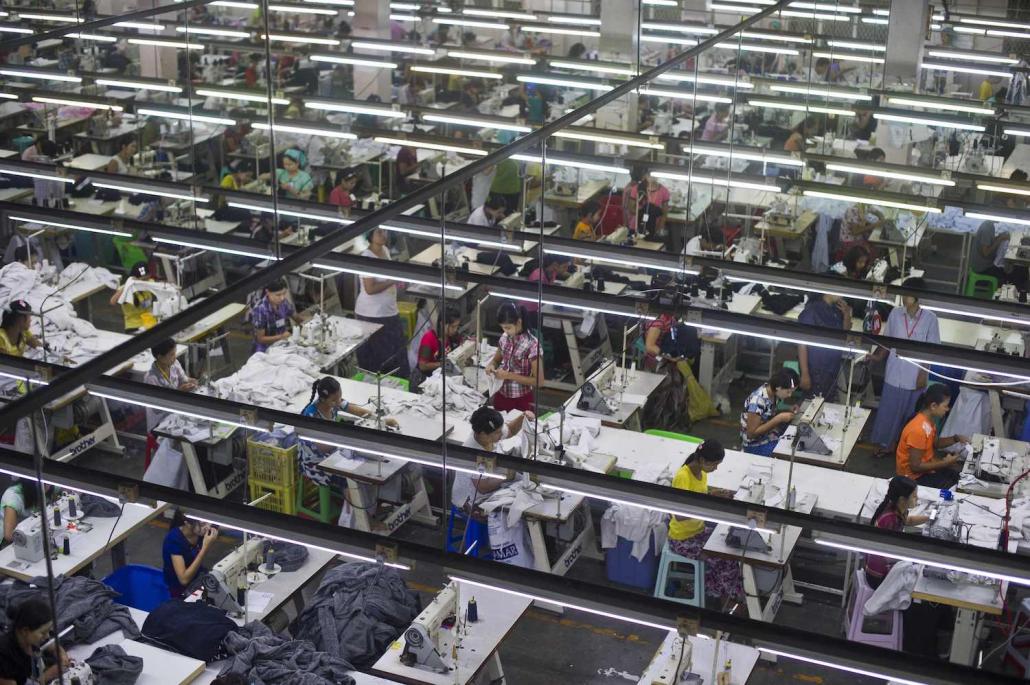
Employees at a garment factory in the Shwe Pyi Thar industrial zone in September 2015. Workers in Yangon’s garment sector are thought to send back hundreds of millions of dollars a year to rural communities. (Ye Aung Thu | AFP)
Microfinance cash crunch
The lack of a social security system in Myanmar means that when a disaster like COVID-19 strikes, many households borrow money to get them through the tough times.
Microfinance providers, which lend at slightly over 2pc a month, have become much more common since 2011, when the government passed a Microfinance Law to enable them to operate legally.
From April 2016 to October 2019, outstanding loans from microfinance providers grew almost seven-fold, from K271 billion to K1.869 trillion, according to figures from the Financial Regulatory Department. Uptake of microfinance loans helped to drive a 60pc increase in the proportion of adults using formal financial services between 2013 and 2018, a FinScope survey found.
When households do have a choice, they usually take the lower-interest option of a microfinance loan. But borrowing from more expensive informal sources still remains common, particularly for poorer households. Despite the rise of microfinance, the FinScope survey found that use of informal products remained unchanged between 2013 and 2018, at 50pc of the population.
A 2017 survey of rural households commissioned by the multi-donor Livelihoods and Food Security Fund (LIFT) found that informal moneylenders were still the most common source of credit across all income bands, slightly ahead of microfinance. The poorest 20pc of households were far more likely to have taken a loan from a moneylender, however, with 38pc reporting to having done so in the past year.
Those who have borrowed from moneylenders told Frontier they were driven by a need for quick money with minimum requirements. The microfinance loan application process by contrast often requires borrowers to submit documents such as a Citizenship Scrutiny Card and a household list of family members, which many poor households do not have.
In a November 2016 policy brief, the European Union-funded MyJustice programme reported that because Muslims, Hindus and unregistered migrants often struggle to get identity documents, they can be cut off from formal capital. This pushes them into the arms of moneylenders.
For many, though, microfinance may not have been an option in recent months. COVID-19 has had a severe impact on many microfinance companies, which faced a liquidity crunch because they were unable to collect outstanding loans on schedule.
In an effort to reduce pressure on borrowers, the regulator for the microfinance sector, the Financial Regulatory Department, announced the suspension of loan collections by microfinance companies from April 5 to May 15, and loan repayments had to be rescheduled. FRD also limited deposit and lending services to company premises, effectively curtailing new lending during this period.
Microfinance companies have resumed loan collections and new lending but with less cash coming in, they’ve had to “ration” their cash and offer fewer or smaller loans.
LIFT’s financial inclusion and private sector programme helps microfinance companies access financing to expand their loan portfolio, and works with 75pc of the sector by asset size.
Programme head Mr Curtis Slover said LIFT was anticipating a $180 million to $200 million liquidity shortfall among the microfinance companies it works with. It plans to bring in more than $50 million in new liquidity, but he doesn’t expect cash flows in the sector to return to normal until September or October.
Slover said an increase in people turning to moneylenders “should be expected”.
“One of the ways households deal with shocks is to borrow. It’s the number one tool they have,” he said. With microfinance providers struggling to issue new loans, he added, “I would expect people to look for other sorts of financing.”
The moneylender from Magway said she had already been inundated with requests for new loans because many microfinance companies in the area had stopped issuing new loans.
“I am just lending money to the people I know because I’m worried that borrowers will run away and I’ll lose my money,” she said on May 18. “Even so, some of the people I know have run away without paying it back.”
When Ko Phyo Sithu Win, who lives in Yangon’s Sanchaung Township, learned he would be temporarily furloughed because of COVID-19, he tried to get a loan from AEON Microfinance in the first week of June so he could still send money back to his family in Magway Township.
“Even though I have finished repaying my old loan, I couldn’t borrow anything from AEON,” he said on June 17. “Instead, I had to borrow from moneylenders, even though the interest rate is too high.”
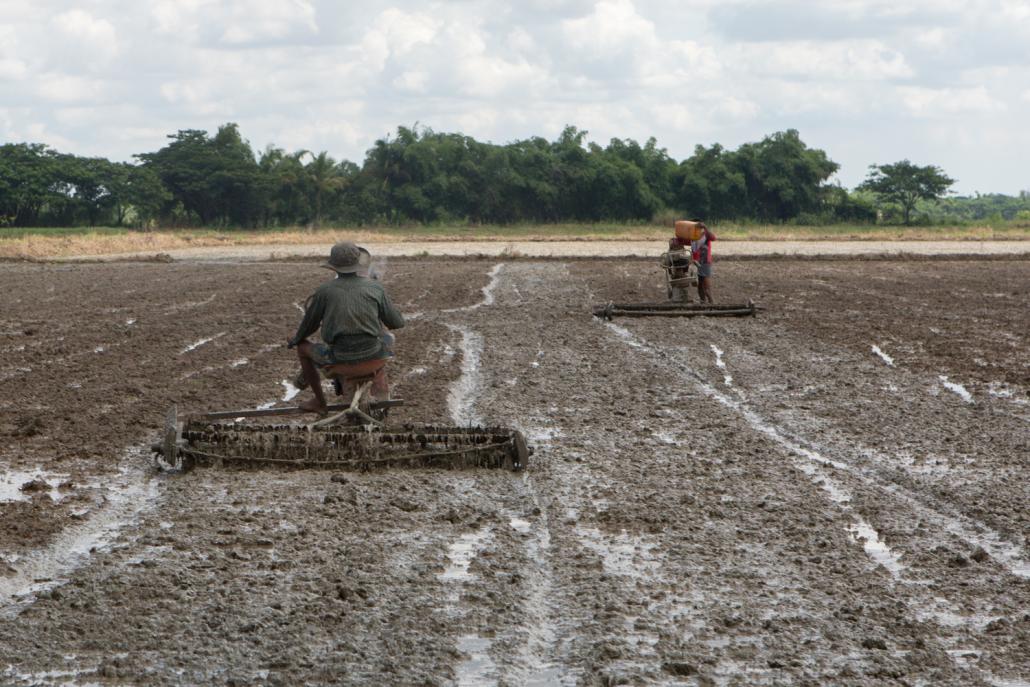
Farmers prepare fields in Twante Township, in rural Yangon Region, in early June. (Thuya Zaw | Frontier)
‘Do you think that I can pay back that money?’
There are also those who owe money to microfinance companies but are now struggling to repay their debts.
Among them is Ma Chaw Su from Kyar Kan village in Magway Township, who has loans from three microfinance companies: K400,000 from the Pact Global Microfinance Fund, K300,000 from Fullerton Finance Myanmar, and K450,000 from the Alliance for Microfinance.
Chaw Su said the money she was receiving as a daily wage earner doing odd jobs was only enough to buy food for her family and she could not afford to make loan repayments.
“I will never borrow from moneylenders to repay the microfinance companies because I do not want more debt,” she said.
She wants to delay repayments until the end of June when she hopes the COVID-19 crisis will be over. “During this time, they should not ask for the repayments,” she said.
But she said that when she explained her situation to staff from PGMF – which was founded in early 2012 as an outgrowth of 15 years of microfinance operations in Myanmar by Pact, a Washington-based non-profit global development organisation – they pressured her to repay her loan.
PGMF Myanmar’s president and chief operating officer, Mr Fahmid Bhuiya, denied that the lender had ever instructed its staff to pressure borrowers to make repayments.
“We welcome the renegotiation of repayments,” he told Frontier on May 21, adding that decisions were being made on a case-by-case basis.
A PGMF spokesperson told Frontier on June 8 that the company would renegotiate with all borrowers who were having trouble meeting loan repayments and give them more time.
Slover from LIFT said that most loans had been rescheduled in a “relatively orderly” way, in part because borrowers wanted to be able to get new loans in future. The largest microfinance companies working with LIFT in rural areas have recently reported strong repayment rates and there appeared to be “no systemic risk” to their loan portfolios. “People may have difficulty repaying loans, but they are repaying them,” Slover said.
This is important, because it means microfinance companies have the cash to issue more new loans to those in need of credit. “Microfinance is quickly regaining its footing in supplying financial services as loan collections have resumed, and loan disbursements are underway for the monsoon season,” Slover said.
But to avoid conflict with microfinance companies and access new loans in future, some are taking on debts from informal moneylenders so they can meet their repayment obligations.
Ma Aye Than, a resident of Lay Eain village in Magway Township, has loans from four microfinance companies and is supposed to repay about K184,000 every month. She has borrowed K300,000 from a moneylender at 7pc interest a month to repay her microfinance loans.
“Do you think that I can pay back that money? My husband earns K15,000 a day selling palm toddy and there are seven in our family,” she told Frontier on May 19.
The only other family member with a job is her eldest son, a freelance jade picker at Hpakant in Kachin State, who was sending at least K200,000 every fortnight before COVID-19, when the market for raw jade collapsed because of a lack of buyers.
“When I pay out a loan from a company I can apply for a new loan, but then I need to borrow from moneylenders to service my debts,” Aye Than said. “So, the money comes from a company and goes to moneylenders.”
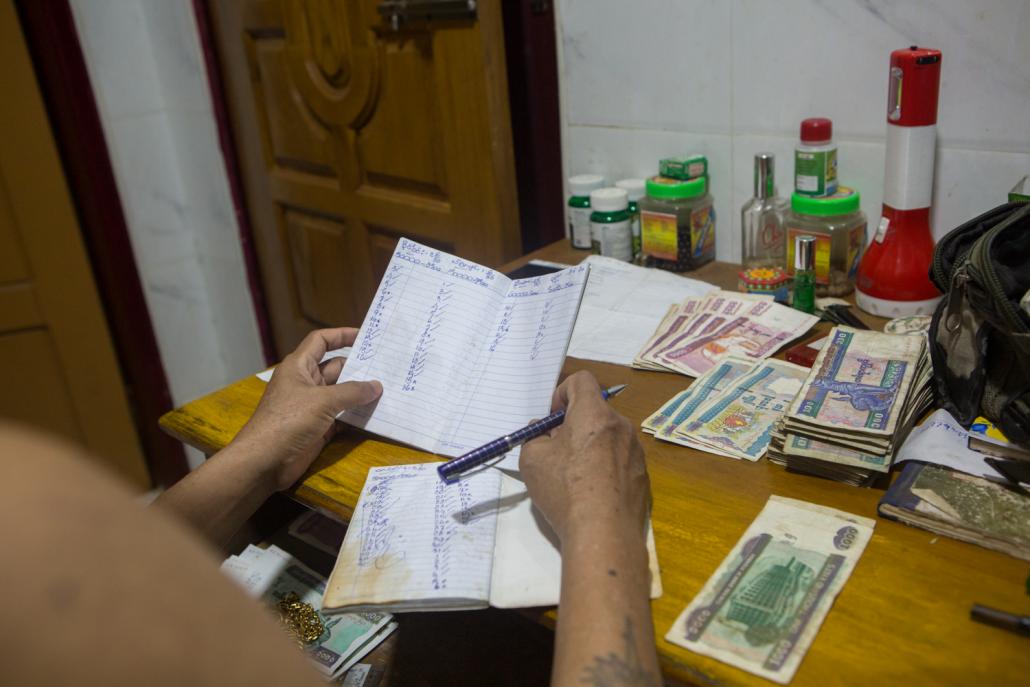
Informal moneylender U Tin Shwe from Insein Township says that because of COVID-19 he has stopped pushing struggling borrowers to repay. (Thuya Zaw | Frontier)
Informal or illegal?
While informal moneylending is often described as illegal, it is rarely, if ever, prosecuted.
Under the 1945 Money Lenders Act, moneylenders could face fines and prison for issuing loans without a licence, and up to three months in jail and a fine for “molestation of a debtor” for the purpose of recovering a debt.
This was replaced in 1962 by a similar Money Lenders Law, which the State Law and Order Restoration Council repealed in 1993 for “no longer being in conformity with the changing circumstances”.
Confusingly, many sources seem to report it as still being in force, and in 2012 Minister for Finance and Revenue U Win Shein told the Pyithu Hluttaw that unlicensed moneylenders could still be prosecuted under the law.
Nevertheless, the 2011 Microfinance Law also makes it an offence to lend without a licence, stipulating a penalty of up to five years’ imprisonment. Similarly, the Financial Institutions Law makes it illegal to offer “banking services” without a licence.
Yet unregistered money lending persists, often alongside formal products.
U Nay Sithu Zaw, a lawyer with experience working on moneylending cases, told Frontier that it was rare for borrowers to file a criminal complaint against a moneylender because of the cost and the belief there would not be enough evidence to prosecute.
Instead, it is much more common for borrowers to find themselves in legal trouble.
Nay Sithu Zaw said that when the sum is large, moneylenders will often make a contract with the borrower. To get around the law on lending without a licence, the interest rate is not included on the contract.
In case of a default, the lender can then file a complaint to police against the borrower under section 406 of the Penal Code, for criminal breach of trust, or section 420, for cheating. The former carries a potential three-year prison term and the latter seven years.
If the defendant can prove that interest was charged then the contract would be invalidated, because the act of lending would be illegal. But producing evidence of this is difficult, because judges normally attach far more weight to signed contracts than oral testimony.
However, he said that in Shan State in 2018 a lawyer had their licence revoked because they had signed a contract between a borrower and lender that excluded the interest rate, and it later came to light that the lender had charged interest.
Disputes over debts are common, however. A November 2016 MyJustice report, Making Big Cases Small & Small Cases Disappear: Experience of Local Justice in Myanmar, found that debts were the most common source of local disputes, many of which go unreported. Ward and village tract administrators, who normally help to resolve minor disputes so they do not go to court, are generally unwilling to intervene in debt disputes unless there is documentary evidence, like a contract.
With the authorities often unwilling or unable to pursue debtors, it is not uncommon for moneylenders to resort to threats and intimidation. Some people who failed to repay debts have even been murdered, said U Tin Shwe, who has been a moneylender for 30 years in Yangon’s Insein Township.
Many crimes are linked to debts, he told Frontier on May 19, “but I never put pressure on borrowers to repay”.
This modus operandi has cost Tin Shwe K22.6 million (about $16,250) over 30 years, he said. But with many people struggling financially because of COVID-19, he has decided to temporarily stop lending money.
“We cannot take legal action against borrowers who do not repay loans because we are not legal,” he said.
Tin Shwe said his fear of being arrested is assuaged by “weak law enforcement” and a good relationship with his borrowers.
U Myo Zaw, another moneylender in Insein, told Frontier on May 19 that because of COVID-19 he was giving many struggling borrowers more time to repay loans.
“I understand that this is a difficult time for many people,” he said, “so I am not pushing them to repay my money.” – Additional reporting by Thomas Kean


